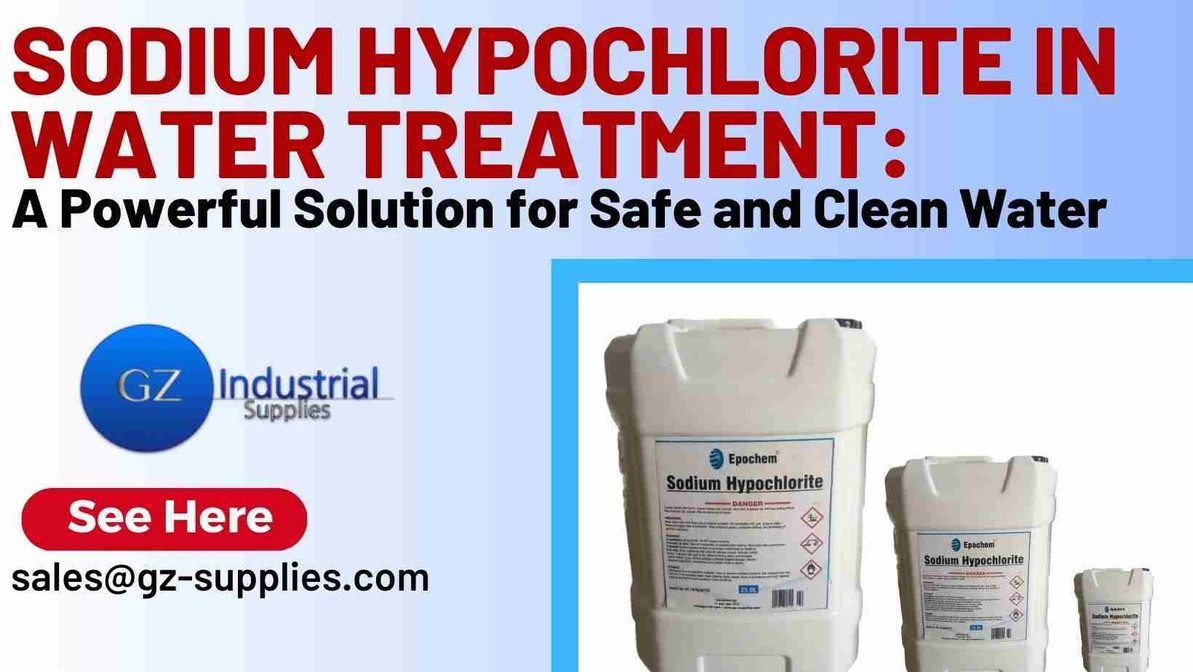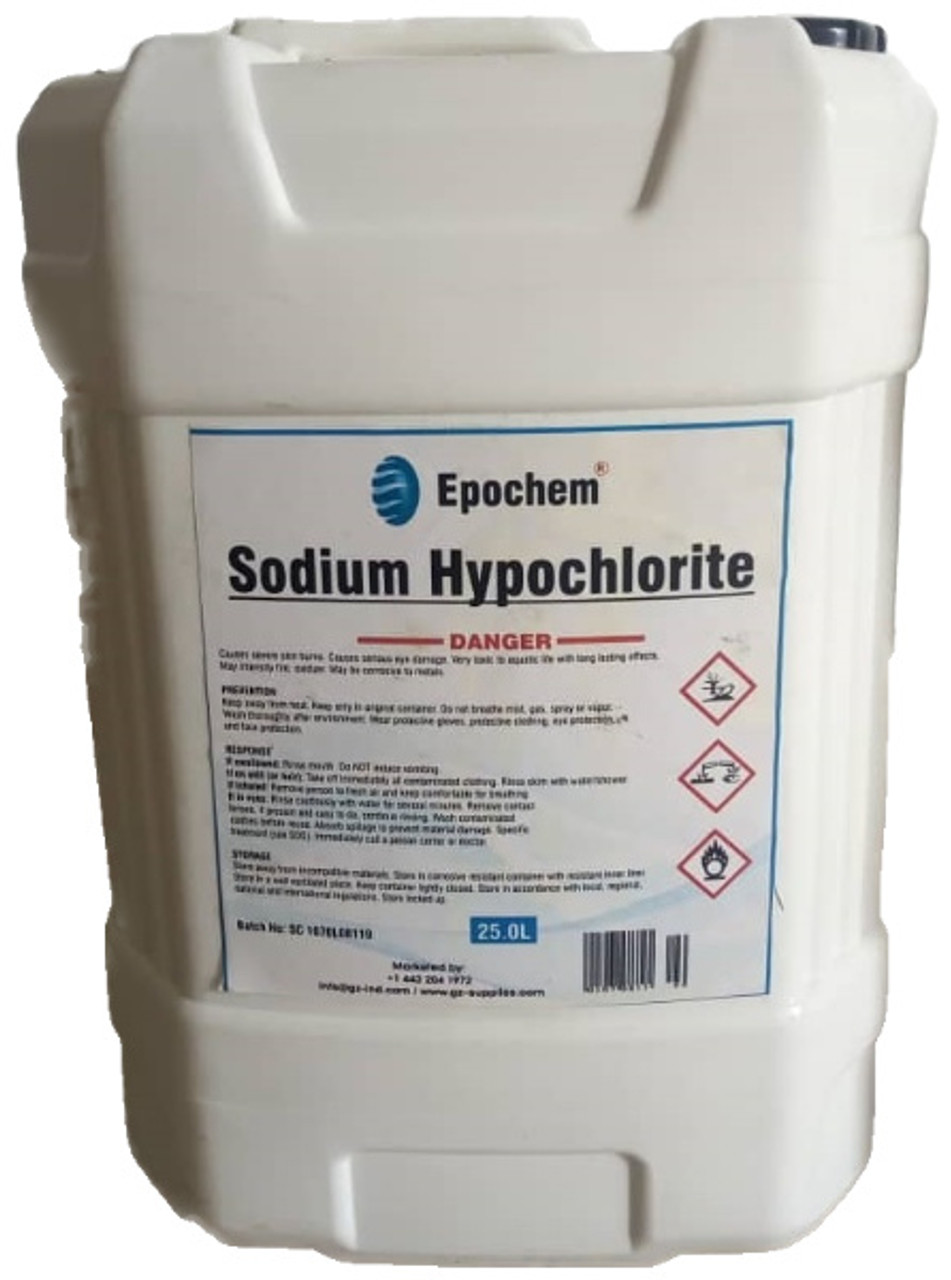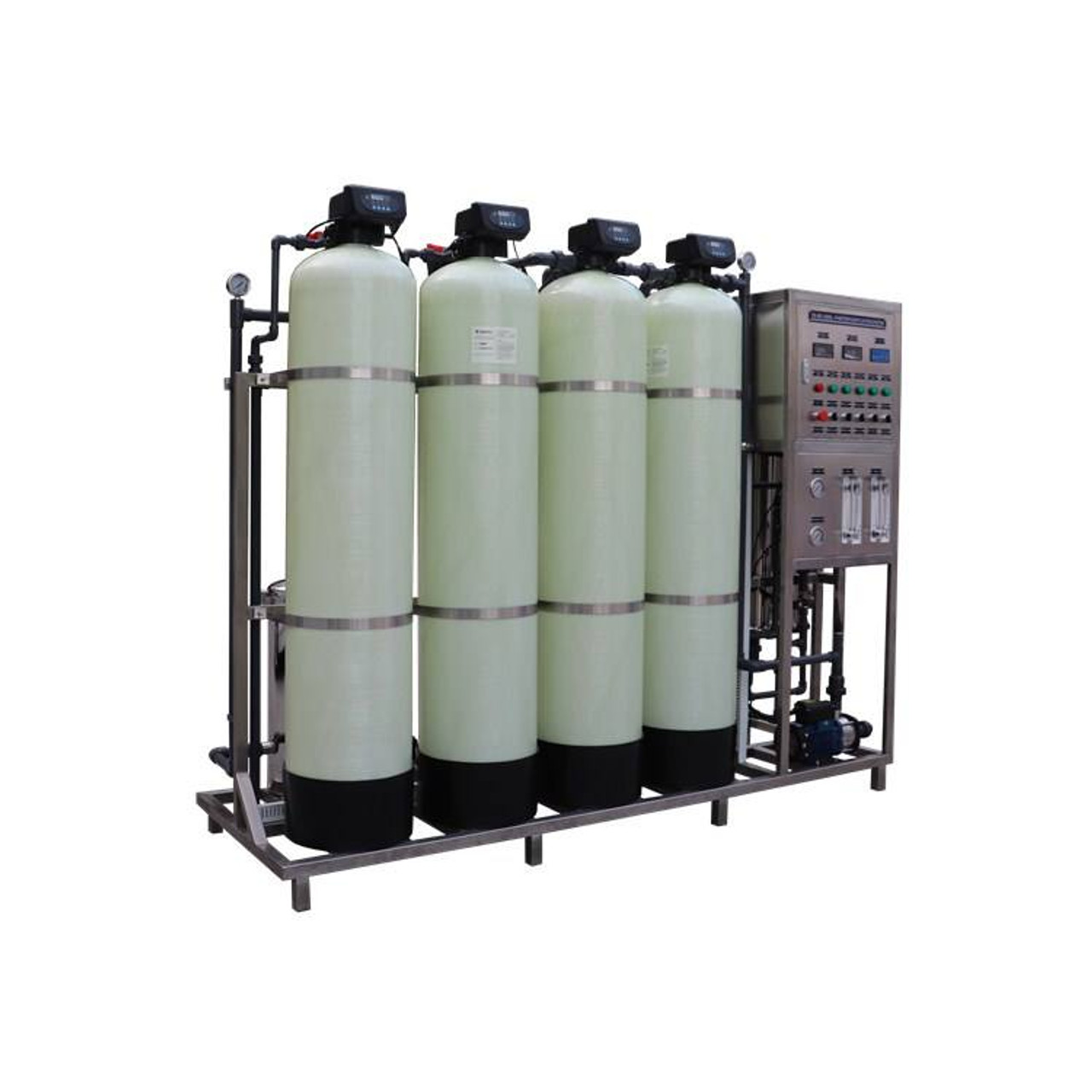Sodium Hypochlorite in Water Treatment: A Powerful Solution for Safe and Clean Water
Among the various methods of water disinfection, sodium hypochlorite emerges as a cornerstone solution due to its powerful antimicrobial properties. Sodium hypochlorite is a chemical compound composed of sodium, oxygen, and chlorine. It serves as a versatile disinfectant that effectively neutralizes a broad spectrum of microorganisms, making it an ideal choice for purifying water.
Clean and safe water stands as a fundamental cornerstone of human health and well-being. Access to potable water is a necessity that transcends geographical, cultural, and socioeconomic boundaries. The significance of water quality cannot be overstated, as it directly impacts both individual and community health, environmental sustainability, and the overall quality of life. This introductory section delves into the critical importance of clean and safe water, elucidates the role of water treatment in ensuring its availability, and introduces sodium hypochlorite as a vital water disinfectant.
The Epochem Sodium Hypochlorite is a chlorine compound often used as a disinfectant or a bleaching agent. Sodium hypochlorite in 0.5% w/v solution is called Dakin's solution, and is used as an antiseptic to clean infected topical wounds. Epochem Sodium hypochlorite appears as colorless or slightly yellow watery liquid with an odor of household bleach. The disinfection mechanism of sodium hypochlorite centers on the release of hypochlorous acid (HOCl) when it comes into contact with water. Hypochlorous acid is a potent oxidizing agent that penetrates microbial cell walls, disrupting enzymes and genetic material, and ultimately causing cell death. This mode of action extends its efficacy against bacteria, viruses, and other waterborne pathogens.
In water treatment, sodium hypochlorite is added at carefully controlled concentrations to achieve optimal disinfection while ensuring that residual chlorine levels are maintained throughout the distribution network. Its widespread use and proven efficacy in water treatment processes have solidified sodium hypochlorite's role as a crucial tool in the quest for clean and safe water for all.
In the subsequent sections, we will delve deeper into the science behind sodium hypochlorite's disinfection mechanism, its applications in water treatment, its advantages, dosage considerations, safety measures, and its place within the larger landscape of water disinfection methods.
Epochem Sodium Hypochlorite
Understanding Sodium Hypochlorite
Sodium hypochlorite, often recognized by its chemical formula NaClO, is a chemical compound that plays a pivotal role in water treatment and disinfection. In this section, we'll delve into the chemical composition and properties of sodium hypochlorite, explore the broader role of chlorine compounds in water disinfection, and demystify the formation of hypochlorous acid—a key player in the disinfection process.
1. Chemical Formula and Properties of Sodium Hypochlorite:
Sodium hypochlorite is a compound composed of sodium (Na), oxygen (O), and chlorine (Cl) atoms. Its chemical formula, NaClO, represents the combination of these elements. In its liquid form, sodium hypochlorite is typically a pale yellow-green solution that has a distinct chlorine-like odor.
Sodium hypochlorite is water-soluble and dissociates into its constituent ions when mixed with water. In this solution, the hypochlorite ion (ClO-) and sodium ion (Na+) are present. The hypochlorite ion is responsible for the compound's disinfection properties, while the sodium ion helps stabilize the solution.
2. Role of Chlorine Compounds in Water Disinfection:
Chlorine and its compounds have been used for centuries to disinfect water and make it safe for consumption. Chlorine's effectiveness as a disinfectant lies in its ability to disrupt the structure and function of microbial cells. In the context of water treatment, chlorine compounds like sodium hypochlorite act as oxidizing agents, interfering with the cellular processes of bacteria, viruses, and other pathogens.
When chlorine compounds are introduced into water, they undergo chemical reactions that generate hypochlorous acid (HOCl) and hypochlorite ions (ClO-). These species are responsible for the antimicrobial action of chlorine compounds. The balance between hypochlorous acid and hypochlorite ions depends on factors such as pH and temperature, which influence the disinfection efficiency.
3. Hypochlorous Acid Formation and Disinfection Mechanism:
One of the key aspects of sodium hypochlorite's disinfection mechanism is the generation of hypochlorous acid (HOCl) when it reacts with water. Hypochlorous acid is a potent oxidizing agent that can easily penetrate the cell walls of microorganisms, including bacteria and viruses.
When hypochlorous acid enters a microbial cell, it disrupts essential enzymes and damages genetic material. This interference with vital cellular processes leads to cell death and renders the microorganism inactive. Hypochlorous acid's mechanism of action is broad-spectrum, targeting a wide range of pathogens and preventing their ability to reproduce and cause infections.
The effectiveness of hypochlorous acid is influenced by various factors, including water pH, temperature, and contact time. Lower pH levels favor the formation of more hypochlorous acid, enhancing disinfection efficiency. As water distribution networks vary in pH and temperature, understanding these factors is crucial for optimizing the use of sodium hypochlorite in water treatment.
Epochem Sodium Hypochlorite
The Need for Water Disinfection
Waterborne diseases pose a significant threat to public health, affecting millions of people worldwide. In this section, we will explore the grave consequences of waterborne diseases, delve into the types of microbial contaminants and pathogens commonly found in water sources, and highlight the crucial role of water treatment in removing impurities and safeguarding communities.
1. Waterborne Diseases and Their Impact on Public Health:
Waterborne diseases are illnesses caused by ingesting water contaminated with various microorganisms, chemicals, or other impurities. These diseases can lead to a range of symptoms, from mild gastrointestinal discomfort to severe infections, and in extreme cases, they can be fatal. The impact of waterborne diseases is particularly pronounced in regions with limited access to clean water and inadequate sanitation facilities.
Contaminated water serves as a transmission medium for a multitude of pathogens, including bacteria, viruses, protozoa, and even helminths (parasitic worms). Waterborne diseases can result in outbreaks that spread rapidly through communities, overwhelming healthcare systems and posing a substantial economic burden.
2. Microbial Contaminants and Pathogens in Water Sources:
Water sources, whether surface water bodies (rivers, lakes, reservoirs) or groundwater aquifers, are not inherently free of microbial contaminants. These contaminants can originate from various sources, such as sewage, agricultural runoff, industrial discharges, and human or animal waste.
Common microbial contaminants include:
- Bacteria: Pathogenic bacteria such as Escherichia coli (E. coli), Salmonella, and Campylobacter are often found in contaminated water and can cause severe gastrointestinal infections.
- Viruses: Waterborne viruses like hepatitis A, norovirus, and rotavirus can cause illnesses ranging from mild to severe, affecting the digestive and respiratory systems.
- Protozoa: Parasitic protozoa such as Giardia and Cryptosporidium can survive in water and cause gastrointestinal diseases that lead to diarrhea and vomiting.
3. Role of Water Treatment in Removing Impurities and Pathogens:
Given the inherent risks associated with microbial contaminants in water sources, the importance of water treatment cannot be overstated. Water treatment facilities are designed to effectively remove or neutralize impurities and pathogens, ensuring that the water delivered to communities is safe for consumption.
Water treatment processes include a series of steps that target different types of contaminants. Coagulation and flocculation help aggregate suspended particles, sedimentation allows them to settle, and filtration further removes remaining particles. Disinfection, however, is the cornerstone of water treatment, as it aims to destroy or inactivate harmful microorganisms.
Sodium hypochlorite, as a powerful water disinfectant, plays a pivotal role in this stage. By introducing sodium hypochlorite into the water treatment process, waterborne pathogens are neutralized, preventing them from causing diseases when the water is consumed. The residual disinfection effect also helps maintain water quality as it travels through distribution systems to reach consumers' taps.
Applications of Sodium Hypochlorite in Water Treatment
Water treatment is a multifaceted process that involves several stages to transform raw water into safe and clean drinking water. Sodium hypochlorite's integration into these stages is critical to ensuring the removal of harmful microorganisms and the provision of potable water. In this section, we'll explore the overview of municipal water treatment processes and how sodium hypochlorite is strategically applied at different stages to eliminate pathogens and prevent microbial regrowth.
1. Overview of Municipal Water Treatment Processes:
Municipal water treatment is a comprehensive series of steps designed to purify water from various sources, making it suitable for consumption. The treatment process typically includes coagulation, flocculation, sedimentation, filtration, and disinfection.
2. Integration of Sodium Hypochlorite at Different Stages:
Sodium hypochlorite is strategically integrated into the water treatment process to ensure effective disinfection. Its application occurs at various stages:
- Pre-Chlorination: Sodium hypochlorite is introduced at the beginning of the treatment process as a pre-chlorination step. This initial dosing helps in controlling algae and organic matter present in the raw water, preparing it for subsequent treatment.
- Primary Disinfection: Sodium hypochlorite serves as the primary disinfectant, targeting a wide spectrum of pathogens such as bacteria, viruses, and protozoa. This stage ensures that the water is safe for consumption by neutralizing potential health hazards.
- Post-Chlorination: After the primary treatment, post-chlorination with sodium hypochlorite is carried out to maintain residual disinfection as water travels through distribution networks. This step prevents microbial regrowth and maintains water quality until it reaches consumers' taps.
3. Role of Sodium Hypochlorite in Eliminating Pathogens and Preventing Microbial Regrowth:
Sodium hypochlorite's effectiveness in eliminating pathogens lies in its ability to oxidize cellular components of microorganisms, rendering them inactive. Hypochlorous acid (HOCl) penetrates microbial cell walls, disrupting enzymes and genetic material, effectively preventing the microorganisms from reproducing and causing diseases.
Furthermore, the residual disinfection effect of sodium hypochlorite ensures that water remains protected against microbial regrowth as it journeys through distribution systems. This consistent disinfection prevents the accumulation of harmful microorganisms that could compromise water quality and health.
1000L/hour Reverse Osmosis Water Treatment Plant System for Water Purification
Advantages of Sodium Hypochlorite
Sodium hypochlorite offers several advantages that make it a preferred choice for water disinfection in various applications. These advantages stem from its chemical properties and its efficacy in neutralizing a wide range of pathogens.
1. Broad-Spectrum Effectiveness:
Sodium hypochlorite's disinfection action is broad-spectrum, targeting bacteria, viruses, and protozoa. This versatility makes it a reliable solution for combating diverse waterborne pathogens.
2. Rapid Disinfection Kinetics:
Upon contact with microorganisms, sodium hypochlorite acts swiftly. Its rapid disinfection kinetics mean that it can quickly neutralize pathogens, providing immediate results and reducing the risk of disease transmission.
3. Residual Disinfection:
The residual disinfection effect of sodium hypochlorite offers sustained protection. As water flows through distribution systems, residual chlorine levels prevent the regrowth of microorganisms, ensuring the continued safety of the water until it reaches consumers.
Dosage and Regulation of Sodium Hypochlorite
The proper dosage of sodium hypochlorite is crucial for effective disinfection while avoiding over- or under-dosing. Several factors influence the determination of appropriate dosage:
1. Water Quality and Characteristics: The initial quality of the water, including its turbidity, organic content, and microbial load, impacts the necessary dosage of sodium hypochlorite.
2. Target Pathogens: The specific types of pathogens present in the water dictate the required dosage. Different pathogens have varying susceptibility to disinfectants.
3. Water Temperature and pH: Water temperature and pH influence the rate of chlorine decay and the formation of hypochlorous acid. Adjustments in dosage may be necessary based on these factors.
Maintaining residual chlorine levels is essential for sustained disinfection effects. Regular water quality testing is vital for optimizing dosage and ensuring that the treated water meets safety standards.
Safety Considerations for sodium Hypochlorite
Sodium hypochlorite is a powerful disinfectant but should be handled with care due to its corrosive nature. Safety precautions include:
1. Handling Precautions:
Direct contact with sodium hypochlorite can cause skin and eye irritation. Proper personal protective equipment (PPE) should be worn when handling the compound.
2. Storage Guidelines:
Sodium hypochlorite should be stored in a cool, dry place away from direct sunlight and incompatible materials. It should be kept in well-ventilated areas.
3. Protective Equipment and Training:
Water treatment personnel must be trained in the safe handling and application of sodium hypochlorite. PPE, such as gloves, goggles, and aprons, should be worn during handling and dosing.
Conclusion
Sodium hypochlorite's role in water treatment is paramount. It eradicates pathogens, safeguards water quality, and fosters public health. As a guardian of clean water, it directly impacts well-being and societal progress. By prioritizing effective water treatment, we ensure a healthier and more sustainable future for all. Let sodium hypochlorite's legacy inspire global action toward safe and accessible water for generations.
Readers also like…
Safe Handling of Sodium Hypochlorite: Dos and Don'ts
Epochem Sodium Hypochlorite Best Environmental Disinfectant in Nigeria
Epochem Sodium Hypochlorite Best Environmental Disinfectant in Nigeria
SODIUM HYPOCHLORITE IS EFFECTIVE IN FIGHTING THE CORONA VIRUS
Recent Posts
-
Press Release: Same Great Lube, Less Waste: Lubemax 50:50 makes the Switch to Sustainable Packaging
In a move towards environmental responsibility, Epoxy Oilserv Nigeria Limited is proud to announce t …Apr 23, 2024 -
Top 8 Generators Recommended by Professionals in Nigeria (Reviews)
Generators can keep your home or business running with your essential equipment until the power is b …Apr 23, 2024 -
Transformer Safety: Preventing and Managing Common Hazards
Transformers are critical components in the electrical distribution system, handling high volt …Apr 23, 2024





